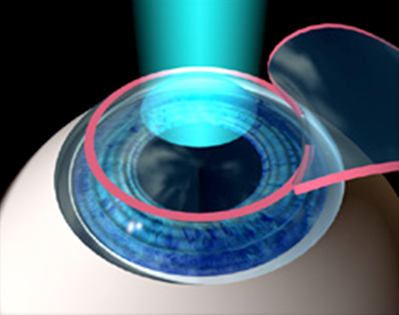LASIK or Laser-Assisted in Situ Keratomileusis is a surgical procedure that may permanently change the cornea’s shape. It helps to improve the vision and reduce dependency on glasses or contact lenses. Besides, the procedure may use a laser to correct near-sightedness, far-sightedness or astigmatism.
The cornea and lens should properly bend to allow light rays to focus the images on the retina and give a clear vision. An unclear focus of the light rays on the retina may make the images blurry which is known as refractive error. The problem is usually caused by an eyeball, cornea or lens that is not perfectly shaped.
During an initial consultation, a complete examination of eyes is done to ensure that the eyes are healthy. Other tests may measure the cornea’s curve, size and position of pupil, the eyes’ shape and the cornea’s thickness.
Beverly Hills LASIK may be done on an outpatient basis with the procedure being performed on each eye for 10-15 minutes.
FDA has recommended some guidelines that evaluate a person for being suitable for the procedure. These are:
- One should be at least 18 years with the exception being a small child with one very near-sighted eye and the other a normal eye.
- One should not be pregnant or breastfeeding as it may affect eye measurements.
- A person taking certain prescription drugs such as Accutane or oral prednisone should not undergo this procedure.
- The eyes should be healthy with stable prescription.
- It is not to be performed on someone suffering from diabetes, rheumatoid arthritis, lupus, glaucoma, herpes infection of the eye or cataracts.
An eye drop may be used as an anesthesia to numb the eye’s surface and the patient is usually awake while the procedure is being performed. Also, the procedure for both the eyes may be done in the same session.
During the procedure, the
laser eye surgeon Beverly Hills may use a special knife or microkeratome to cut a hinged flap of corneal tissue from the outer layer of the eyeball. After lifting out the flap, the underlying corneal tissue is reshaped using a special laser. After the reshaping is done, the surgeon may secure the flap and protect it by placing a shield or patch over the eyes. This may prevent rubbing or pressure on the eye and gives enough time to heal.
After the surgery, the patient may feel burning, itching or something being there in the eyes. Also, a mild discomfort is there which may be relieved by pain medication. In the first follow-up treatment, the surgeon may remove the shield or patch and examine the eyes along with testing the vision.
This is your new blog post. Click here and start typing, or drag in elements from the top bar.

 RSS Feed
RSS Feed